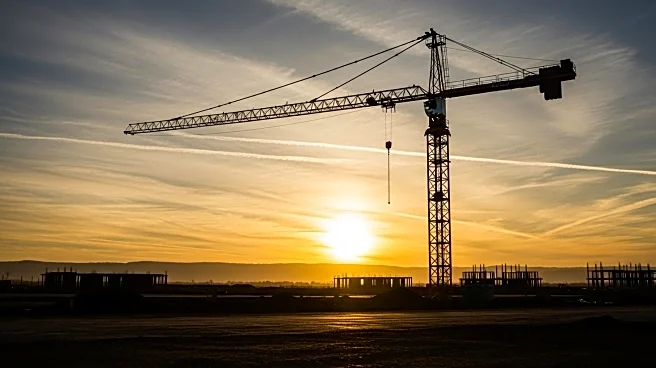What's Happening?
The demand for residential land in the United States has significantly decreased, as reported by John Burns Research and Consulting. This decline is closely linked to reduced builder profitability and persistently high land costs, which are impacting new-home construction. The demand for residential lots has dropped by nearly two-thirds, leading to a slowdown in construction starts and adjustments in land purchase strategies by builders. The current market conditions are marked by increased transaction cancellations and renegotiations, indicating a standstill between buyers and sellers. The cyclical nature of the market suggests that falling new-home prices may eventually lead to lower land costs, potentially resulting in reduced new-home prices in the future.
Why It's Important?
The decrease in demand for residential land has significant implications for the U.S. housing market. Builders facing shrinking profit margins may reduce construction activity, which could lead to a slowdown in the availability of new homes. This situation may affect homebuyers, particularly those looking for affordable housing options, as fewer new homes are built. Additionally, the high land costs and reduced demand could influence the overall housing market dynamics, potentially leading to price adjustments and shifts in buyer-seller negotiations.
What's Next?
As the market adjusts to the decreased demand for residential land, stakeholders such as builders, real estate developers, and homebuyers may need to adapt to changing conditions. Builders might explore alternative strategies to maintain profitability, such as focusing on smaller projects or seeking cost-effective land options. Real estate developers may need to renegotiate land deals or explore new markets. Homebuyers could benefit from potential price reductions in new homes if land costs decrease, but they may also face limited availability of new housing options.
Beyond the Headlines
The decline in residential land demand underscores broader economic challenges, including the impact of high land costs on housing affordability. It raises questions about the sustainability of current market practices and the need for innovative solutions to address housing shortages. Long-term, this trend could influence urban planning and development strategies, prompting discussions on land use policies and the balance between development and conservation.











